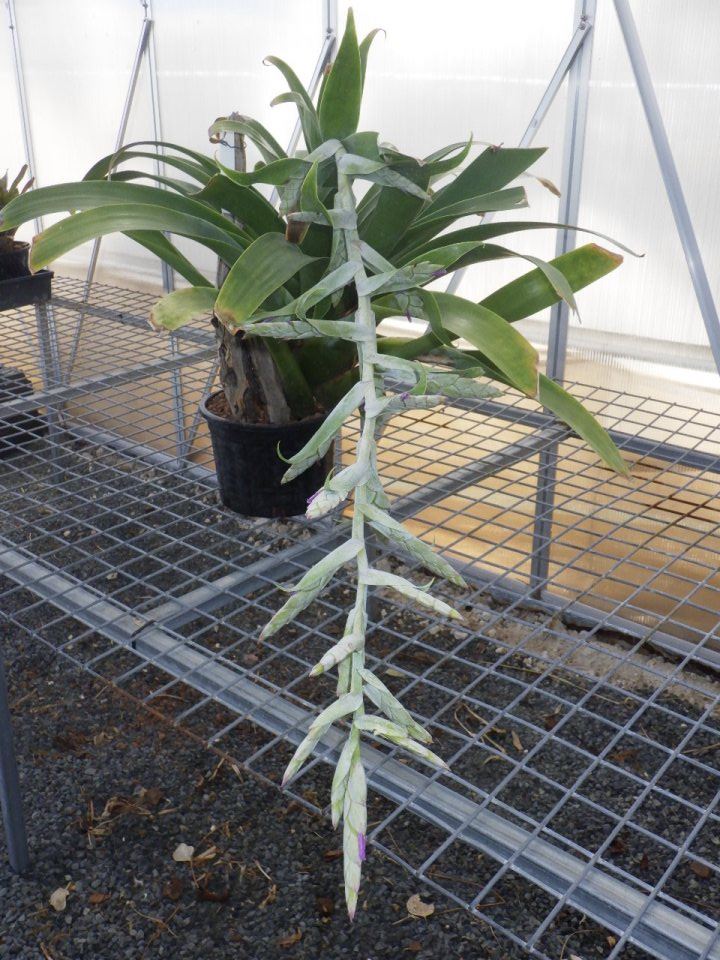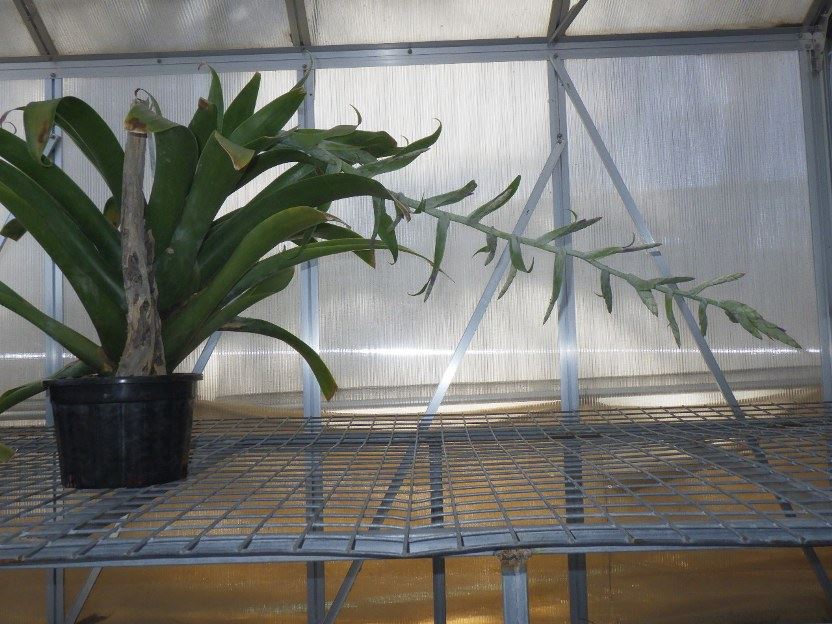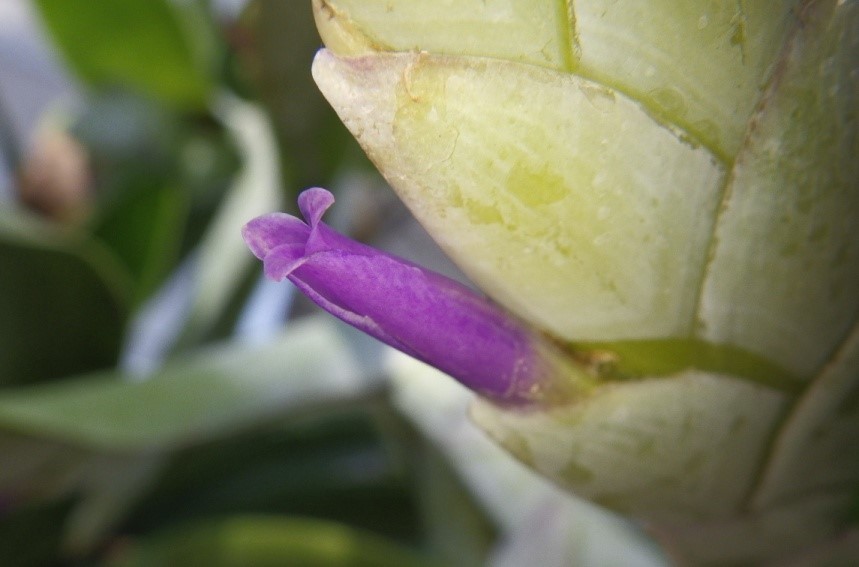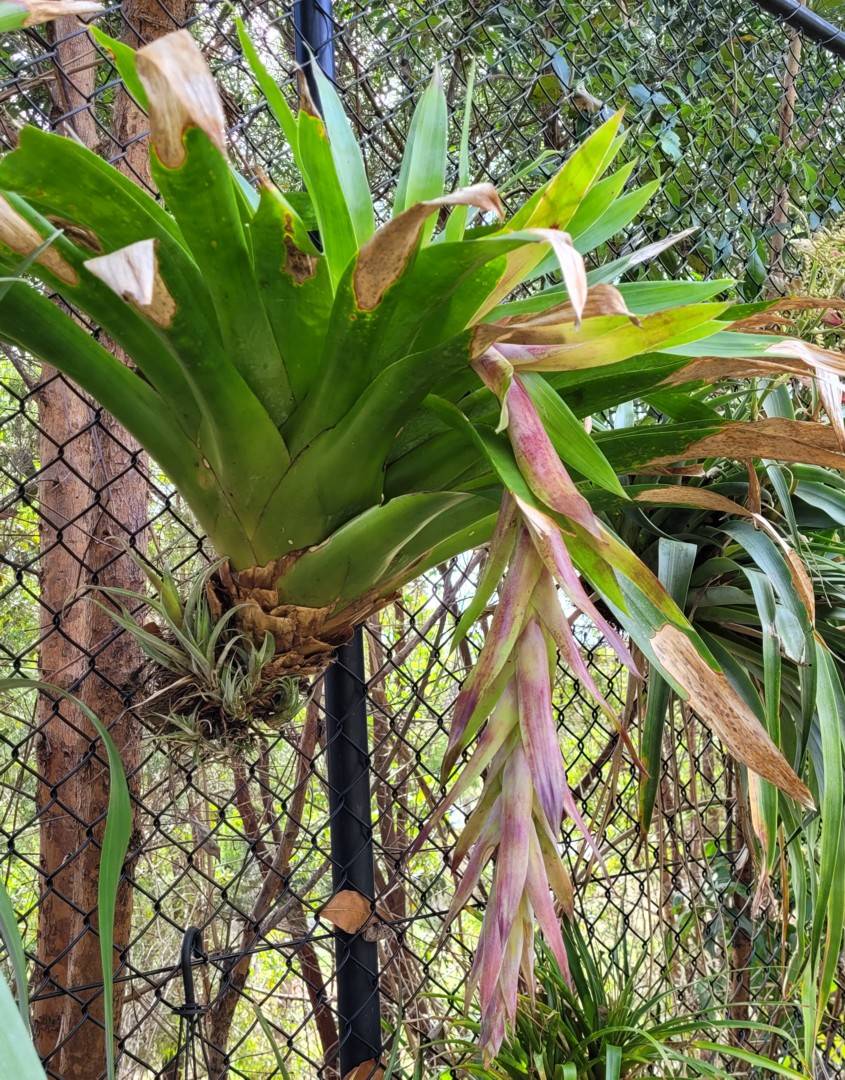






Tillandsia fosteri Gilmartin, Phytologia 16: 157.1968. Made synonymous with T. demissa in Flora Ecuador 1993
Plant flowering 15 dm high with the inflorescence extended.
Leaves rosulate, 45-55 cm long;
Sheaths ovate, 17-20 cm long, 8-10 cm wide, densely appressed-lepidote, purple in part;
Blades ligulate, acute, 60-75 mm wide, glabrous on both faces, purple-blotched.
Scape stout, decurved, much exceeded by the leaves;
Scape-bracts foliaceous, very densely imbricate.
Inflorescence pendent, bipinnate, lax, 65 cm long, glabrous;
Primary bracts spreading, the lowest subfoliaceous and exceeding the axillary branches;
Spikes lanceolate from a short sterile bracteate base, acute or some (pathological?) caudate with several apical sterile flowers, strongly complanate, 9-10 cm long, 20-25 mm wide.
Floral bracts imbricate and doubtless concealing the rhachis at anthesis, elliptic, acute, 27-30 mm long, coriaceous, mostly smooth and lustrous, carinate.
Sepals elliptic, acute, 21-25 mm long, nerved, densely lepidote within, the posterior carinate, connate for 2-3 mm;
Petals ca 35 mm long.
Capsules about equaling the floral bracts.
Type.. Foster 2625 (holotype US), on ledges, Ona to Saraguro, ca 2400 m alt, Loja, Ecuador, 4 Dec 1948.
DISTRIBUTION. Known from the type collection only.
Tillandsia demissa by Werner Rauh in JBS 37(4): 168. 1987
Tillandsia demissa L.B. Smith (1954)
A striking Tillandsia of southern Ecuador, known only from the region of Ona to Saraguro (Prov. Loja), is the saxicolous Tillandsia demissa. It grows only on steep rock walls and we collected it near Saraguro.
Tillandsia demissa has short but thick, rhizomatous stems, covered with remains of the old leaves, which bear a big rosette of 80-100 cm high and 1.5 m in diameter (Fig. 9).
Leaves many, 90-120 cm long, mostly erect; the elder hanging down.
Sheaths inconspicuous, ample, up to 30 cm long, 10-15 cm wide, brown lepidote.
Blades ligulate, acute-attenuate, 50-120 cm long, 8-11 cm wide, flat, green, gray-waxy, obscurely punctulate-lepidote with some purple mottling.
Inflorescence pendent.
Scape decurved, short, hidden in the rosette.
Scape bracts densely imbricate and subfoliaceous, erect.
Inflorescence up to 1.2 m long, 12-15 cm in diameter, densely bipinnate, cylindrical (Fig. 10), with it's 35 erect spikes.
Primary bracts broadly ovate, up to 20 cm long, 5 cm wide, erect, green to wineČred, gray-waxy, the basal ones with a foliaceous blade, longer than the spikes; the upper ones only acute-attenuate and mostly shorter than the spikes. The latter 12-16 cm long, 3-3.5 cm wide, erect, strongly complanate, densely 8-to 17-flowered, with a short, sterile base.
Floral bracts suborbicular, 3.2 cm long, 3 cm wide, equaling the sepals, carinate, with an acute and incurved apex, wine-red and gray-waxy.
Sepals free, the posterior carinate, 30 mm long, elliptic, obtuse, glabrous beneath, densely lepidote above, yellowish green.
Petals 4.5 cm long, erect, violet.
Stamens and style included.
This big Tillandsia, of which young plants are very attractive because of the gray-waxy leaves, is known only from the Cuenca-Loje region of southern Ecuador.
Our collection number is: Rauh 35 209/a, June 1980.